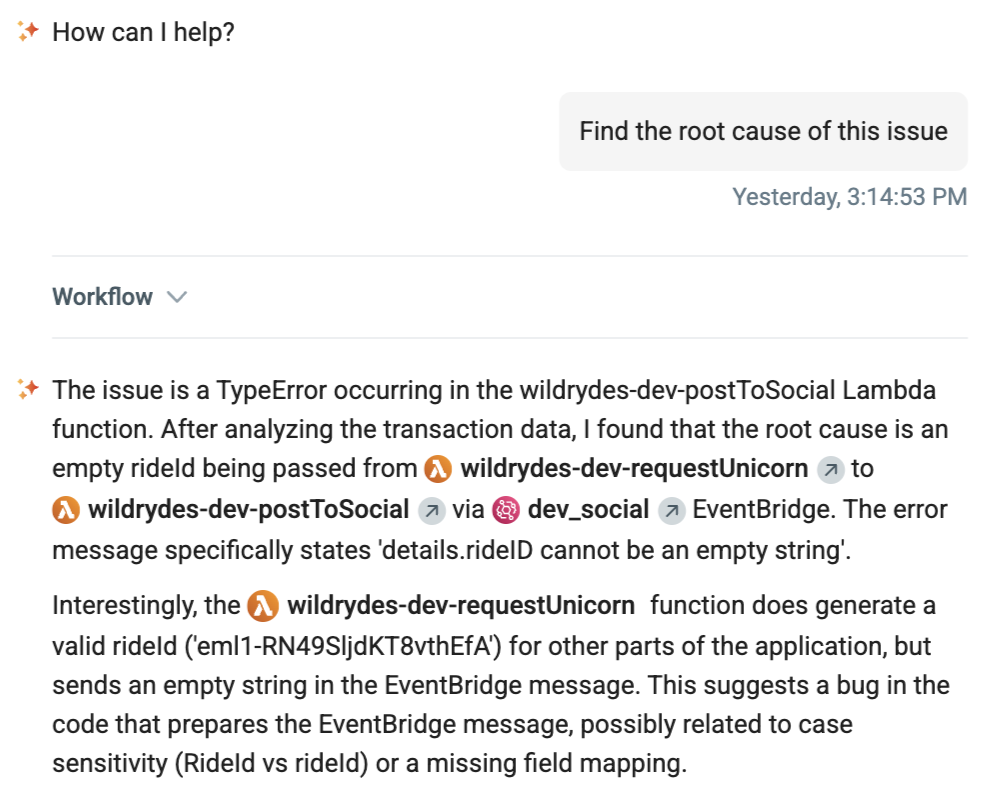Lumigo Copilot Overview
Overview
Copilot is our smart AI agent that will allow you to accomplish all you do in Lumigo, and more, faster. Copilot and its features have been developed from the ground up with your needs in mind. Because Lumigo provides a complete data observability store with our traces and request / response payloads, Lumigo's Copilot has a critical advantage - as any AI offering is only as good as the underlying data that powers it.
It is integrated within Lumigo's Observability data, giving it direct access to your traces, logs and payloads. That means better context, smarter answers, and less time wasted on piecing things together.
For detailed information on its features and what it can do for you, read below.

Capabilities
Lumigo provides several core features with its Copilot offering:
- Accelerated Troubleshooting: Copilot allows you to significantly speed up the troubleshooting process. Whenever an alert indicates an issue in your production environment, you can use Copilot to synthesize all of the usual time-consuming solutions and datastreams into a single, coherent flow of insight. Instead of wasting time on cross referencing a lot of different data streams, Copilot will allow you to decipher and find out the root cause of many issues in a much shorter amount of time.
- Accessibility And Integration: We designed Copilot to be accessible from multiple touchpoints, in order to meet you wherever you are in your current workflow. Copilot is either available from Lumigo's UI, Slack, and Teams. These integrations allow you to use Copilot wherever and whenever necessary.
- Data Exploration: Beyond specific issues that might crop up during your work, Copilot allows you to answer more general questions and perform complex queries on your data. It is integrated into the Traces Search page, which means you can ask questions such as 'How many traces has this user conducted today?' in a conversational manner as opposed to by using complex, manually built queries.
- Preventing Future Issues: Copilot can also help with more than just finding solutions to existing issues. You can ask our Copilot about future prevention of similar issues.
- Creating And Summarizing Tickets: Copilot allows you to create a ticket for an issue, or summarize it in your stead so you can add it to any ticket management system of your choice.
- Chat History: You can see all of the previous conversations you have had with Copilot over the past 7 titles, with easy to remember titles for each one. This allows you to have seamless continuations of previous discussions, and means you can effortlessly swap to a parallel topic without losing progress in another one.
Updated 4 months ago